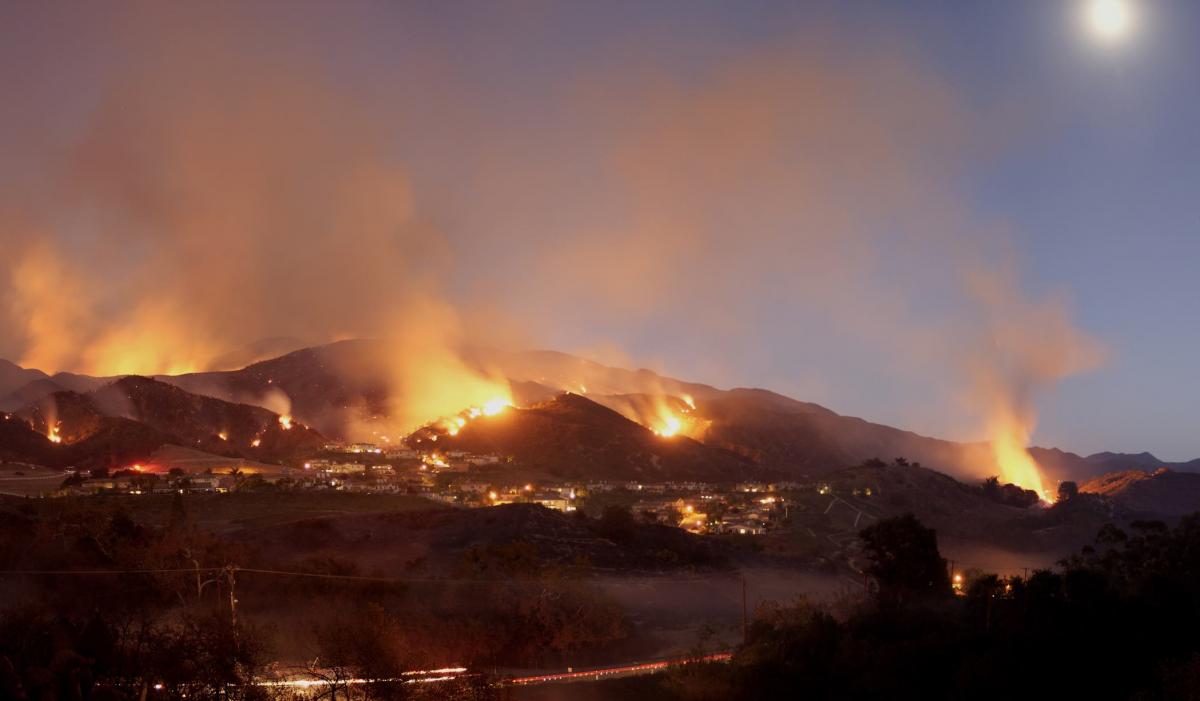Resiliency Is Key to Managing the Risks of Climate Change
Steve Sanders is sustainable communities program director for the Institute for Local Government and can be reached at ssanders@ca-ilg.org.
The 2017 wildfire season was the worst in California’s history. Dozens of cities from Santa Rosa to Ventura and beyond are still reeling from the fires that burned hundreds of thousands of acres statewide. Recovery will take years of concerted effort. City leaders are also setting their sights on how to deal with the fire next time, or better yet, prevent it from wreaking havoc in the first place.
“The most important lesson for all of us in California is that we must think differently about wildfires,” says Santa Rosa Mayor Chris Coursey. “This [Santa Rosa] fire went through a neighborhood in the most unlikely place. It jumped a warehouse, burnt a business park and then destroyed 1,400 homes in a subdivision that has been in the city for 40 years.”
Preparing for the “New Normal”
A global firm that provides risk analysis for the insurance industry and other customers worldwide estimates that more than 2 million households in California are at high or extreme risk from wildfire, more than twice as many households as Texas, the state ranked at next highest risk. This “new normal” means cities statewide will have to step up their efforts in hazard mitigation, emergency planning and resilience.
More intense and destructive wildfires aren’t the only risk posed by California’s changing climate. Rising tides, heat waves, changing rain and snowfall patterns and other climate disruptions are already affecting California communities.
The state has developed the Safeguarding California Plan to address the risks posed by climate change. The plan recommends seven comprehensive principles for creating more resilient communities:
1. Consider climate change in all core functions of government;
2. Partner with California’s most vulnerable populations to increase equity and resilience through investments, planning, research and education;
3. Support continued climate research and data tools;
4. Identify significant and sustainable funding sources for investments that reduce climate risks, harm to people and disaster spending;
5. Prioritize natural infrastructure solutions, actions that both build climate preparedness and reduce greenhouse gas emissions, and projects that produce multiple benefits;
6. Promote collaborative adaptation processes with federal, local and regional government partners; and
7. Increase investment in climate change vulnerability assessments of critical built infrastructure systems.
Recent state law makes it even more imperative that cities create their own plans to prepare for climate impacts. SB 379 (Jackson, Chapter 608, Statutes of 2015) requires that cities and counties address climate adaptation and resiliency in their Local Hazard Mitigation Plan or in the Safety Element of the local General Plan no later than Jan. 1, 2022. Cities throughout California will need to assess their vulnerability to climate change and set goals, policies and objectives to protect their communities.
ILG Provides Resiliency Resources for Local Government
The Institute for Local Government (ILG) can help cities prepare for a more climate-resilient future. ILG serves on the technical advisory committee for the governor’s Integrated Climate Adaptation and Resiliency Program (ICARP), newly created to “bring together local governments, practitioners, scientists and community leaders to … better prepare California for the impacts of a changing climate.”
ILG is working to ensure that the state supports local and regional resiliency efforts and develops useful tools and guidance that reflect the goals and challenges facing local communities. ILG has developed a Climate Adaptation and Resilience Online Resource Center (www.ca-ilg.org/climateresilience) to serve local officials and staff. The resource center provides up-to-date information on the programs and funding local governments can use to help protect their residents from the risks and hazards of California’s changing climate.
For more information, contact Steve Sanders at ssanders@ca-ilg.org.
This article appears in the March
2018 issue of Western City
Did you like what you read here? Subscribe
to Western City

